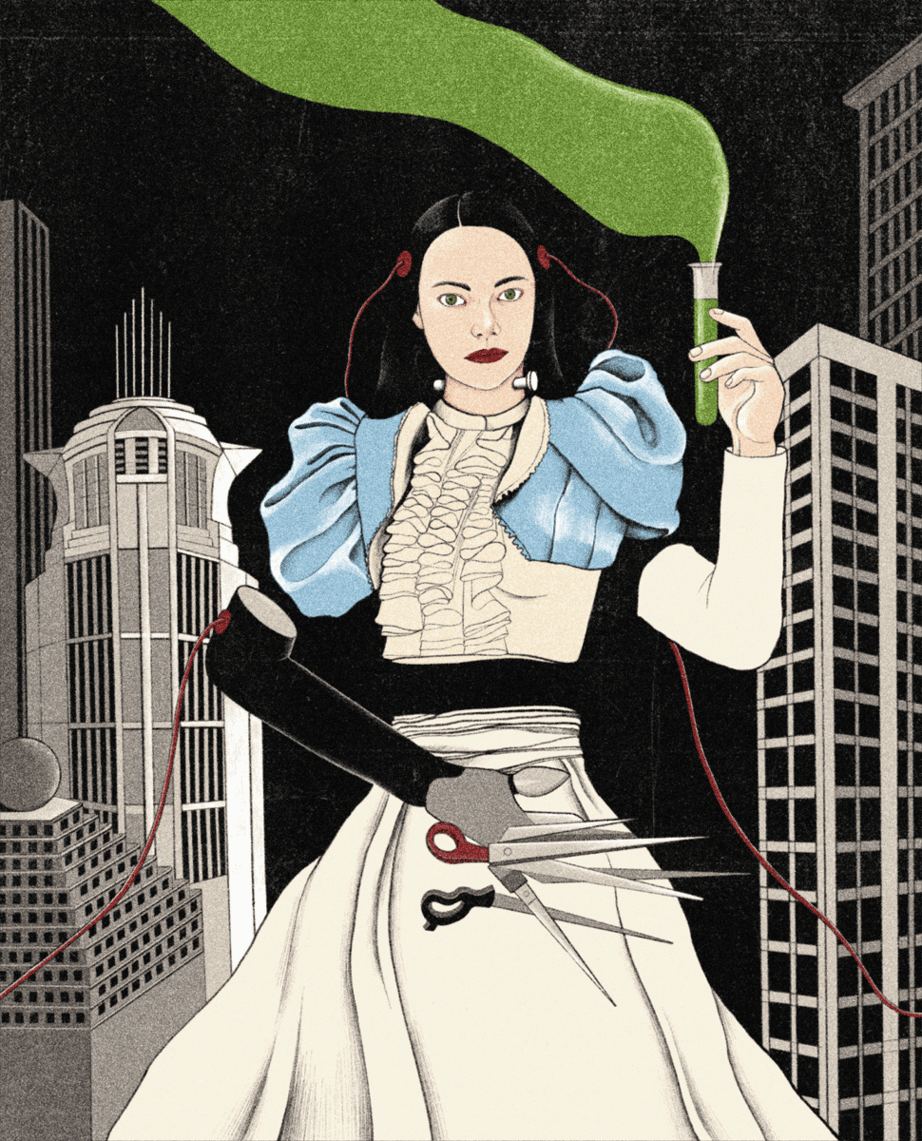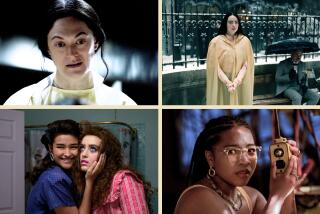The creature: It’s still alive
- Share via
Since its original publication in 1818, Mary Wollstonecraft Shelley’s “Frankenstein” has been analyzed and interpreted, adapted and imitated, studied, staged, filmed, animated and mass-marketed. Almost two centuries after it first captured the public’s fancy, the story of mad scientist Victor Frankenstein and the ghastly monster he culled from corpses remains one of the world’s most unusual and intriguing tales.
Today, the image of the block-headed monster is so ingrained in the culture that he appears on everything from cereal boxes to stamps to video games, even an exceedingly strange TV advertisement for the joint medication Osteo Bi-Flex.
But much of what is viewed as Frankenstein is a far cry from Shelley’s original work -- either the science, the philosophy or the monster, who’s almost universally portrayed as an oversized lug with bolts in his neck.
Helping to reconcile the story’s present-day image with its past are two new exhibits at UCLA -- “Frankenstein: Penetrating the Secrets of Nature” and “Was I Then a Monster ...?”
The first, a traveling exhibit curated by the National Library of Medicine and the American Library Assn., explores Shelley’s life; the novel’s genesis; the 19th century science that influenced it; the plays, films, books, collectibles and memorabilia it inspired; and the questions the story raises about human identity and scientific responsibility.
The second exhibit, a spinoff culled from holdings in the UCLA library, looks at the book from a strictly textual point of view. It includes an original 1818 print of the book, the one drawing of the monster that Shelley approved, some of the novels Shelley later wrote and numerous texts that either directly influenced or were tangentially related to the writing of the book.
It was a dark and stormy night in 1816 when Shelley, her soon-to-be-husband Percy Shelley, their friend Lord Byron and his doctor, John Polidori, sat around a villa on the shores of Lake Geneva reading ghost stories. When Byron proclaimed that each of them would write one of their own, Shelley, who was just 19 at the time, set to work on “one which would speak to the mysterious fears of our nature and awaken thrilling horror,” she later wrote.
The result was “Frankenstein: Or, the Modern Prometheus” -- published anonymously in 1818. Despite mixed reviews, it became a bestseller.
Five years later, when it was reprinted with Shelley’s name, the book already was infiltrating the culture in political cartoons and a London stage production.
“The first stage production began to take the philosophy out of the book and make the creature a monster,” said Shelley scholar Betty Bennett, a professor of literature at American University who was literary consultant for the traveling exhibit. “On stage, it’s easier to deal with less complex ideas.
“If you read the book, it really raises the question of who is the monster in this. What you’ll find is that it’s really the scientist because he’s so irresponsible in abandoning his creature.”
Raising difficult questions about individual and societal responsibility, the book was provocative for its time, but the same questions remain relevant.
“It’s very time-appropriate for cloning, stem-cell research, organ transplants. It touches on the point that not all medical research can be done in front of an inquisitive public,” said Sara Karloff, daughter of actor Boris Karloff, whose famous portrayal of the monster in the 1931 movie classic has had an enormous influence.
“The book poses a lot of religious and philosophical and intellectual questions, a lot of which are unanswerable now as much as they were the day Mary Shelley wrote her story,” said Karloff, who will give a short talk at UCLA on Nov. 21. “My father’s contribution to cinema history is just a very small portion of the story.”
*
Frankenstein
What: “Frankenstein: Penetrating the Secrets of Nature” and “Was I Then a Monster ... ?”
Where: Rotunda of the Powell Library Building and Charles E. Young Research Library, both on UCLA campus, Westwood
When: Mondays-Thursdays,
7:30 a.m.-11 p.m.; Fridays, 7:30 a.m.-6 p.m.; Saturdays, 9 a.m.-
5 p.m.; Sundays, 1 p.m.-10 p.m. Hours vary during UCLA intersession, Dec. 13-Jan. 7. Libraries are closed on holidays.
Ends: Jan. 9
Cost: Free admission; $7 campus parking
Info: www.library.ucla.edu /frankenstein
More to Read
Sign up for our Book Club newsletter
Get the latest news, events and more from the Los Angeles Times Book Club, and help us get L.A. reading and talking.
You may occasionally receive promotional content from the Los Angeles Times.










